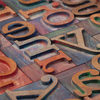Software for scientific texts
|
Schematics & Co.
Almost all articles on a science topics include schematics or circuit diagrams in addition to math or chemical formulas.
These schematics are best produced in vector graphics software that has the correct symbols. Open/LibreOffice, by the way, does have a program to create schematics but doesn't provide symbols.
In terms of symbols for electrical circuits, you can always reference the Wikipedia library [11], which has a library in SVG vector format that is ready to use and is suitable for Dia, Inkscape, and other programs.
Xfig unfortunately does not understand SVG files, but it does have its own comprehensive library.
In my tests, the task was to create a sketch of a simple circuit with voltage sources. All the symbols were available from the Wikipedia library except the ones for voltage and current meters. However, you can import these with the Draw module. Creating a symbol for the voltage meter and current is simple enough with onboard resources by drawing a circle with the appropriate letter inside it.
The program provides a tool for linking the symbols. By selecting it, you can add it to the circuit diagram at every connection point, and it will automatically create a right-angle polygon connector. Unfortunately, the symbols do not always connect the way you might like in the circuit and you may end up with gaps.
Unlike Draw, Dia already has an extensive library that you can add to. With Dia, you can create a schematic with a few mouse clicks. In Figure 10, you can see the symbols for voltage and current meters as SVG files that were imported into the circuit diagram library.
 Figure 10: A comprehensive library makes it easy to draw circuit diagrams with Dia. You can even add your own creations to the library.
Figure 10: A comprehensive library makes it easy to draw circuit diagrams with Dia. You can even add your own creations to the library.
Also unlike Draw, Dia presents no problem connecting the symbols. The result is a clean schematic that you can easily add to any document by saving it as a Dia file or exporting it as an SVG or PNG file.
Inkscape, like Dia, belongs to the vector drawing programs that save files in SVG format, making it easy to import circuit symbols from the Wikipedia library.
If necessary, you can rotate the symbols into position and resize them. The lack of a library, however, makes Inkscape not very suitable only for this purpose, because the work is rather time-consuming.
Importing the elements we need into Xfig is no problem whatsoever. You can draw missing elements and copy them to the corresponding /usr/share/xfig/Libraries path so that they're available to the appropriate library. Xfig does not have a connecting tool, however.
As with Draw and Inkscape, you can manually use the polyline tool. Another drawback of Xfig is its completely outdated design that sets it apart from all other you may have encountered applications. It's not unusable, just unfamiliar.
Conclusion
You can create scientific documents with Open/LibreOffice, LyX, and Kile with all the necessary components and the results are of excellent quality, especially considering that they all export to PDF. However, only LyX and Kile write actual TeX documents. The choice of complementary programs then comes down to the choice of a text editor.
If you're set on using Open/LibreOffice, math formulas are possible through the math program delivered with it. The same goes for LyX with its own editor included in the application. Kile relies fully on generating math expressions in text. If you're looking for a graphics tool for learning, EqualX would make a good choice.There are really no alternatives to GChemPaint for chemical formulas.
Although the Open/LibreOffice modules provide good vector graphics programs, Dia is the prime choice for schematics. No other program makes it easier to create a diagram and convert it to an image file. A particularly valuable functionality is being able to expand the supplied libraries.
As to whether TeX-based software should be used in schools, note that pure TeX software involves a steep learning curve. LyX provides a user interface that resembles familiar office systems, but it's technically a TeX system. Therefore, it rates as an ideal entry point for students. The furthest removed from TeX, but still with good math formula editors, are the two office packages. They are likely the only realistic programs for schools – especially because they include tools for math typesetting and schematics.
Infos
- OpenOffice: http://www.openoffice.org
- LibreOffice: http://libreoffice.org
- LyX: http://www.lyx.org
- Kile: http://kile.sourceforge.net
- Formulator: http://sourceforge.net/projects/formulator-math
- EqualX: http://equalx.sourceforge.net
- GChemPaint: http://www.nongnu.org/gchempaint
- Dia: https://wiki.gnome.org/Dia
- Inkscape: http://inkscape.org
- Xfig: http://www.xfig.org
- Electronic symbols at Wikipedia: http://en.wikipedia.org/wiki/Electronic_symbol
« Previous 1 2 Next »
Buy this article as PDF
Pages: 7
(incl. VAT)






